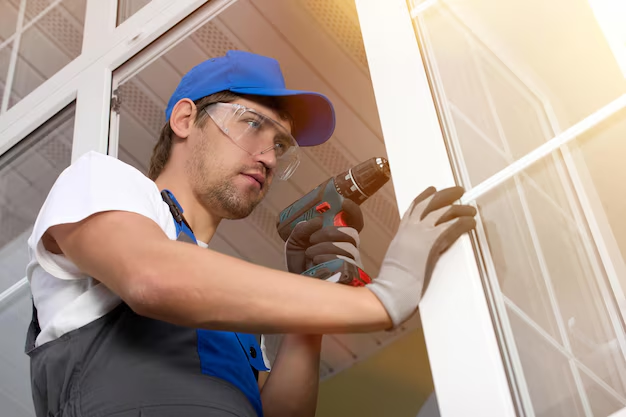Can You Replace Windows Yourself? A Complete Guide for Homeowners
Replacing windows can breathe new life into your home, enhancing both its aesthetics and energy efficiency. But if you're pondering whether to DIY your window replacement or hire professionals, you're not alone. This article provides a comprehensive look at the process, including important considerations, benefits, potential challenges, and step-by-step guidance.
Why Consider Replacing Your Home Windows?
Boost Energy Efficiency
Old or inefficient windows can significantly impact your home's energy consumption. Upgrading to modern, energy-efficient windows can reduce heating and cooling costs, providing long-term savings.
Improve Home Value and Aesthetics
Beyond saving on energy bills, new windows can elevate your home's curb appeal and market value. Stylishly designed windows often make a house more attractive to potential buyers.
Enhance Safety and Security
Older windows might be easy targets for break-ins. Replacing them with modern, secure windows enhances the safety of your home and provides peace of mind.
Can You DIY Window Replacement?
Evaluating Your Skills and Tools
Assess Your Handyman Skills: Window replacement isn't a novice project. Consider whether you possess the necessary carpentry skills and experience with power tools.
Tool Inventory Check: Evaluate whether you have tools like a level, tape measure, pry bar, power drill, and caulking gun. Investing in or renting needed tools may be necessary.
Understanding the Potential Challenges
Measurement Precision: Accurate measurements are critical for a proper fit. Measurement errors can lead to significant problems like air leaks or structural issues.
Installation Complexity: Different window types and structures add varied complexity levels. No two installations are the same, requiring adaptability.
Potential for Damage: Incorrect handling could damage the window or surrounding area. Manufacturer warranties often exclude self-installation mistakes.
Step-by-Step Guide to DIY Window Replacement
Step 1: Preparation
- Planning and Permits: Check local regulations and confirm if permits are required.
- Window Selection: Choose the window type that suits your home's style and energy needs. Double-glazed and vinyl windows are popular choices.
- Secure the Workspace: Clear any obstructions, ensuring safe working conditions.
Step 2: Remove the Old Window
- Carefully Remove Trim: Avoid damaging the wall when taking out the trim or casing.
- Unscrew and Remove: Gently unscrew the window, detaching it carefully from the frame.
Step 3: Install the New Window
- Place the Window: Lift and position the window into the opening, checking for an even fit.
- Secure the Window: Use screws to fasten the window, ensuring it aligns correctly.
- Insulate and Caulk: Properly insulate gaps and apply caulk around the edges to prevent air leaks.
Step 4: Finishing Touches
- Reattach Trim: Secure the trim or casing, ensuring cosmetic appeal.
- Inspect: Double-check functionality by opening and closing the window.
Step 5: Clean-Up
Thoroughly clean the work area, disposing of old materials and excess debris responsibly.
Should You Hire a Professional?
Expertise and Experience
Professional installers bring extensive experience and can anticipate potential installation hiccups, ensuring a flawless execution.
Warranty and Accountability
Most warranties cover professionally-installed windows, ensuring you have recourse if issues arise.
Time and Effort
Hiring professionals saves time and avoids labor-intensive efforts—a key consideration if your schedule is tight.
Cost Considerations: DIY vs. Hiring Professionals
DIY Cost Breakdown: Estimate expenses like window purchase, tool acquisition or rentals, and additional materials such as caulking and insulation.
Professional Installation Costs: While upfront costs are higher, professional services might offer warranty protection and superior workmanship.
⭐ Financial Summary Table:
| Cost Element | DIY (Estimation) | Professional Installation |
|---|---|---|
| Window Cost | Variable, depends on the type | Included in package |
| Tools and Equipment | Upfront purchase/rental | N/A |
| Miscellaneous Materials | $50-$100 | N/A |
| Installation Labor | Free (Time/Skill dependent) | $150-$800 per window |
Practical Tips for Homeowners Considering DIY Window Replacement
- 🛠️ Plan and Prepare: Assess your skills, toolset, and gather all necessary materials before starting.
- 📏 Measure Carefully: Measure multiple times to ensure accuracy for a precise window fit.
- 🔍 Research Thoroughly: Familiarize yourself with detailed instructions specific to your window type and house frame.
- 📣 Seek Help: Enlist help from a friend or family member to manage the weight and steadiness of the window installation.
Closing Considerations
Replacing your windows is a sizeable undertaking with potential rewards such as energy savings, increased home value, and improved aesthetics. Whether venturing the DIY route or hiring professionals, informed decision-making is crucial. By evaluating your skills, budget, and time constraints, you can make the choice that's right for you and your home. With preparation and knowledge, you’re well-equipped to decide on the best path forward in enhancing your living space through window replacement.
